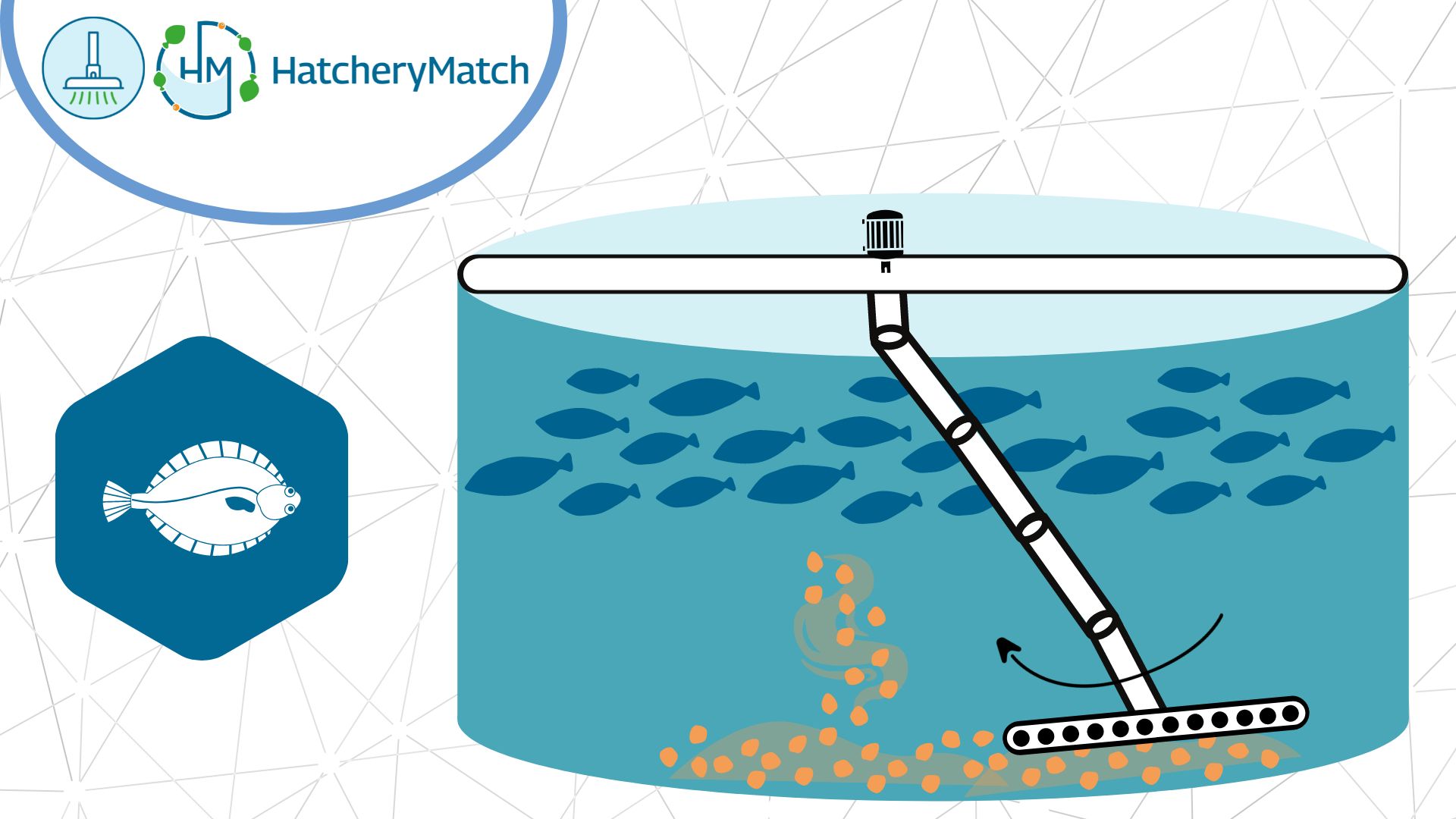Introduction to Automated Bottom Cleaning Device at Fishery Machinery Instrumentation Research Institute
What happens when aquaculture gets messy? Unlike traditional aquaculture methods such as cages, pens, and flowthrough raceways, recirculating cultivation systems are particularly vulnerable to the build-up of particulate fish waste and uneaten feed. Waste products tend to fall and accumulate at the tank bottom, where they can deteriorate the water quality and impact fish health through the release of ammonia and accumulation of bacteria. In hatchery systems, this effect is amplified by the relatively low water velocities required for fragile early life stage fish. When rearing young fish, regular manual siphoning of accumulated waste is necessary to maintain a high degree of water quality.
To help address this issue, HatcheryMatch project partner Fisheries Machinery and Instrument Research Institute (FMIRI) at the Chinese Academy of Fishery Sciences is developing a fully automated bottom cleaning system. In what can be described as an underwater vacuum cleaner, FMIRI’s cleaning system will consist of a series of suction units that rotate along the tank bottom to mechanically remove waste particles through airlift generated suction. This ensures that the entire bottom of the tank will be automatically cleaned at frequent intervals without the need for manual siphoning of each tank, even at velocities safe for small fish!
For more updates on our project visit our LinkedIn
Project HatcheryMatch funded by the Malta Council for Science and Technology through the Sino-Malta Fund 2020 (Science and Technology Cooperation). An Automated Marine Fish Hatchery with Innovated Water Recirculation Technologies (HatcheryMatch, Grant No. 2020YFE0108700, also funded by the Ministry of Science and Technology, China.



